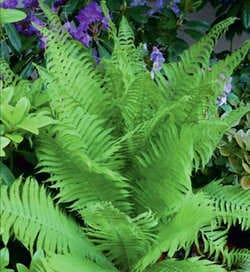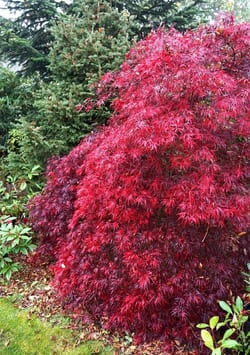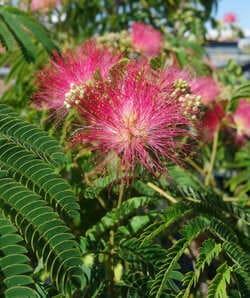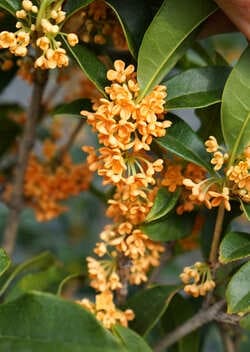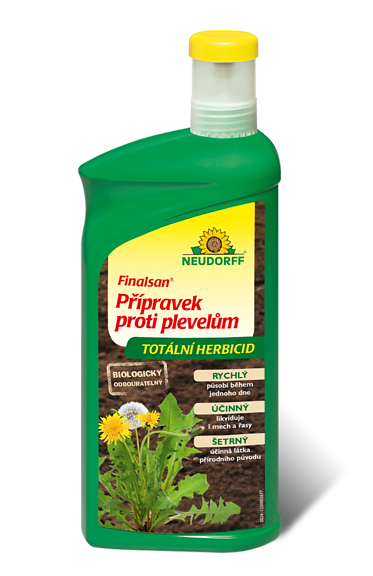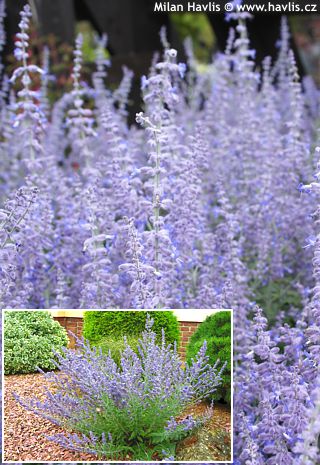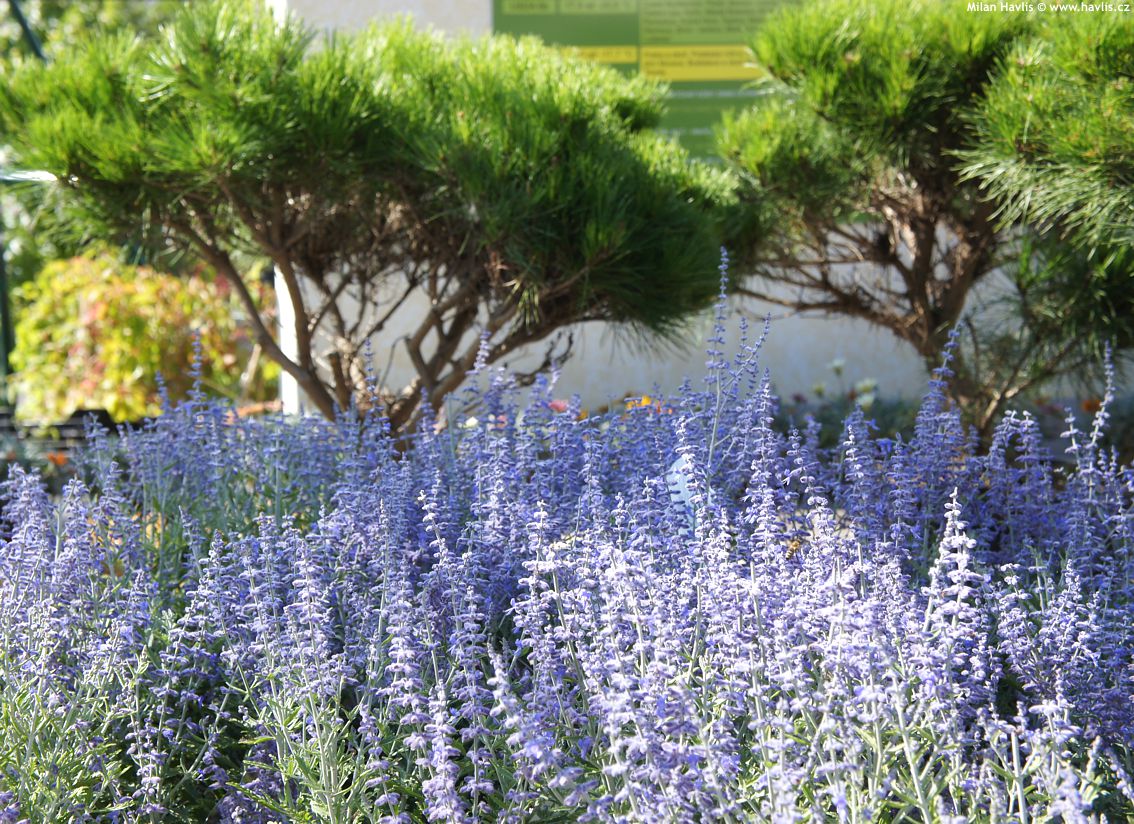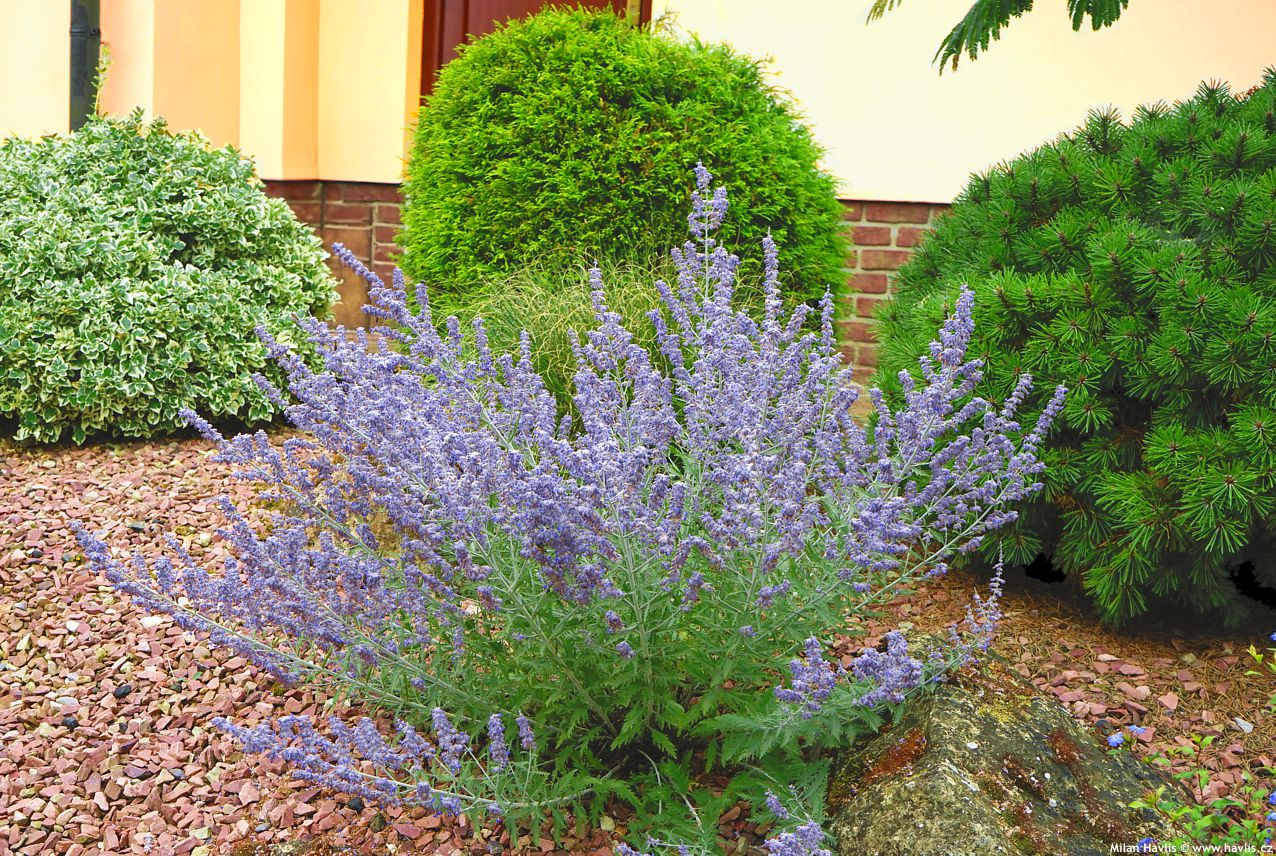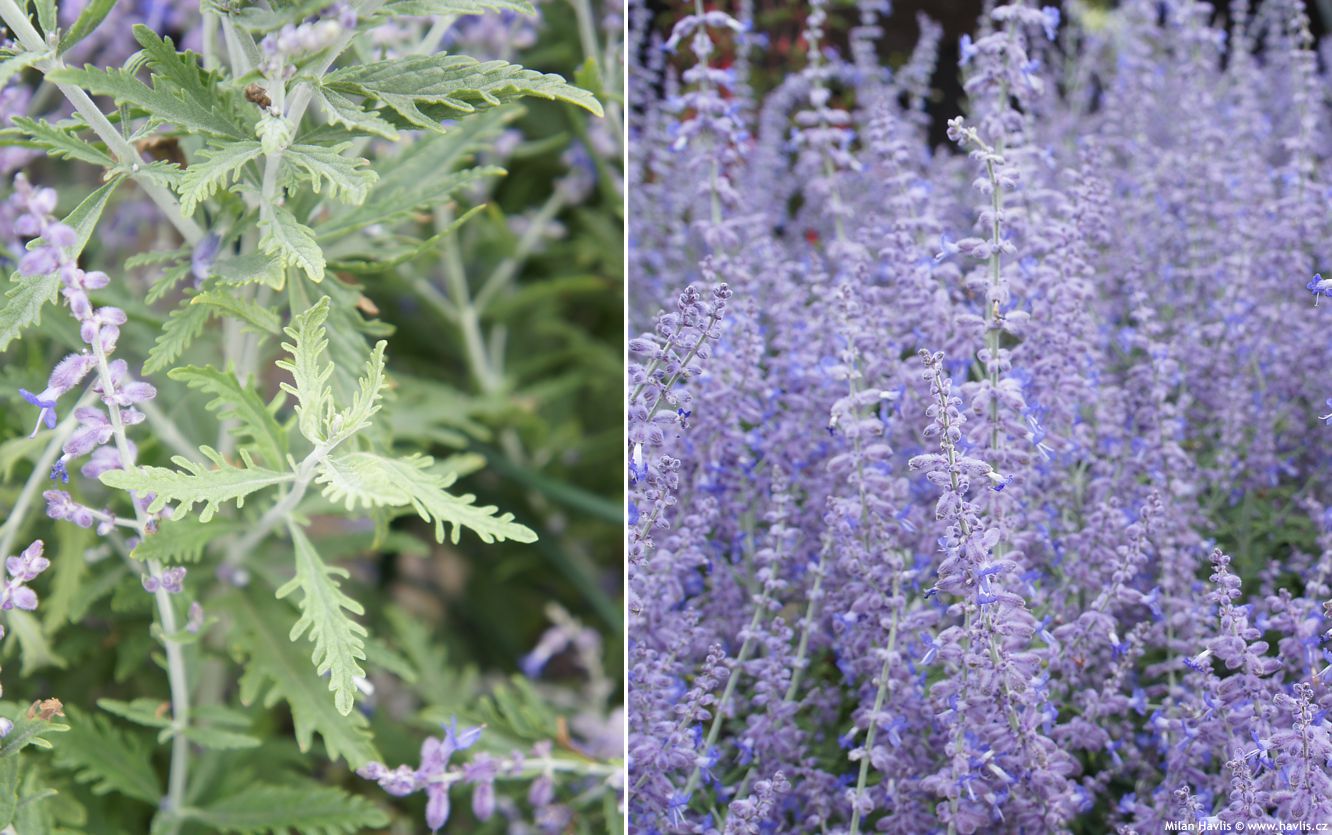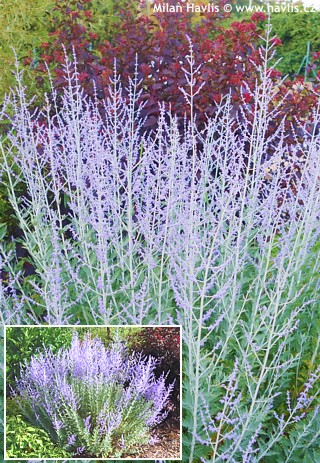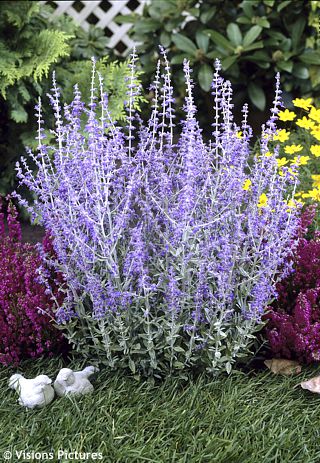Perovskia atriplicifolia LACEY BLUE 'Lisslitt' Russian sage, perovskia
Perovskia
The genus Perovskia originates from the arid regions of Central Asia, naturally thriving on open steppes and rocky slopes: for example, in Tibet it inhabits high plateaus at elevations reaching up to 2400 meters above sea level. It's commonly referred to as Russian sage and sometimes even Russian lavender. Botanically, it's classified as a subshrub — a growth form somewhere between a perennial and a shrub — and thanks to its exceptional tolerance of drought, severe frost, intense sunlight, heat, and poor soils, it's widely used in modern prairie-style plantings. Strictly speaking, however, it’s a steppe plant, the distinction being purely geographic: its native range is in Asia, not the American prairie, though it shares similar ecological traits.
The name Perovskia honours Vasily Alekseyevich Perovsky (1795–1857), a prominent Russian general and governor of the Orenburg region. Although he wasn’t a botanist, his military and diplomatic campaigns in Turkestan enabled numerous scientific expeditions, which gained access to the region’s previously unexplored flora. In recognition of this, the genus was named after him by German botanist Carl Anton von Meyer in 1841, who described the plant while conducting botanical research in the area.
In horticulture, Perovskia atriplicifolia, also described by Meyer in the same year, has become the most prevalent species. It is bred through both selections and hybridization with related species, most often P. abrotanoides, P. angustifolia, or P. scrophulariifolia, which contribute traits like finer foliage, a more compact habit, or slightly different inflorescence architecture. The widespread popularity of perovskia was significantly boosted by American grower David Salman, who selected it for the dry climate conditions of the southwestern United States.
For taxonomic enthusiasts and detail lovers, there’s another intriguing twist: based on molecular analyses, the plant was officially reclassified in 2017 from the genus Perovskia into Salvia, now bearing the name Salvia yangii. This name honours Chinese botanist Chang Y. Yang, a specialist in sage phylogeny. Despite the official renaming, most gardeners and nurseries still refer to it as Perovskia atriplicifolia — not only for practical reasons, but also for the charisma embedded in its original name. Its longevity, low maintenance requirements, and ornamental beauty have secured its place in many garden designs, gracing both private landscapes and public plantings with equal elegance.
LACEY BLUE is a stunning cultivar of Russian sage from England, celebrated for its abundant flowering, compact habit, and distinctive foliage. The blooms resemble tiny slippers, they are of intensely violet-blue colour and emerge from deep violet buds that appear as early as June. Though true flowering begins in the second half of summer, the vividly coloured buds give the plant ornamental value from early in the season. Even after blooming, the colorful purple calyces remain, creating visual appeal well into October. The flowering stems are richly branched and can reach up to 50 cm in height. Year after year, the number of blooms increases, turning the plant into a luminous violet cloud in August. The deciduous leaves begin as bright silvery-grey and mature into a softer grey-green; although small (4–6 cm long), their deeply lobed shape makes them striking. The stems are more silvery than in previously bred cultivars, and the shrub contains fragrant essential oils reminiscent of sage. LACEY BLUE matures to around 1 meter in both height and width.
This cultivar was bred by Peter Catt, based in Liss, Hampshire, England, and is protected by US plant patent PP20845 from 2008. Although officially registered as a selection of Perovskia atriplicifolia, its deeply dissected leaves strongly resemble the morphology of other species, particularly P. abrotanoides. This raises questions about whether there’s an undocumented interspecific influence involved or whether this is simply an exceptional individual with an unusual appearance within the species. Some sources even incorrectly label the cultivar as P. abrotanoides 'Lacey Blue', which is inaccurate. That unexpected leaf form may well be what caught Peter’s eye and inspired him to select it as a new variety.
Perovskia is easy to grow. It tolerates almost any soil — preferably lean and well-drained — as overly moist conditions in winter can cause root rot. Once well established, it copes superbly with drought. For strong growth and abundant flowering, prune it back in early spring by one third to one quarter of the previous year’s branches. If the plant is weak, it can be cut down to around 5 cm, which promotes new shoots and thus more blooms. It is fully hardy to approximately –30 °C (USDA zone 5), with some sources claiming tolerance down to –34 °C. It’s well suited to year-round cultivation in outdoor planters, just ensure excellent drainage as excessive moisture can cause yellowing (chlorosis) and leaf drop.
Last update 15-08-2012; 14-07-2025

119,2 Kč

119,2 Kč
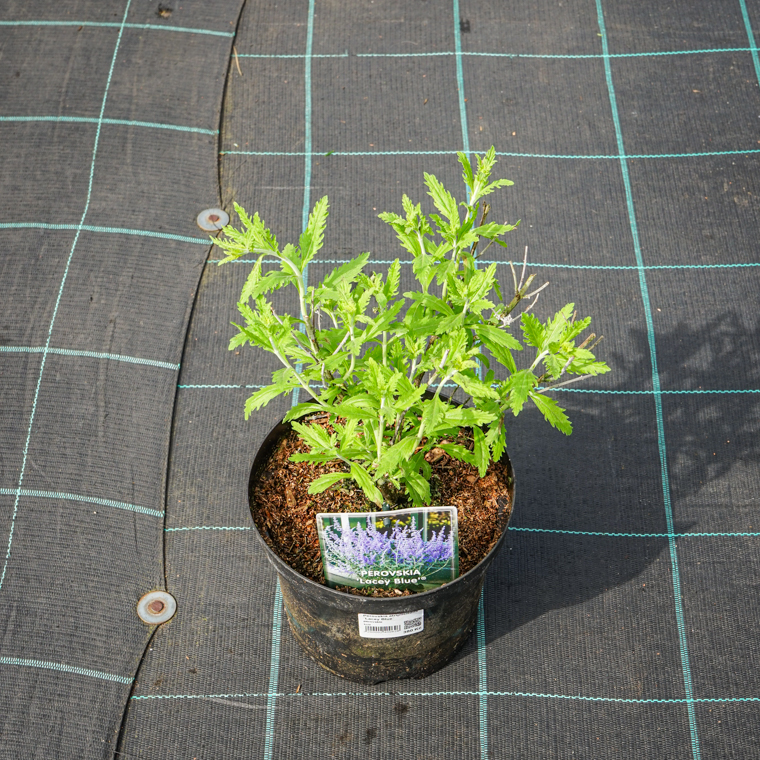
304 Kč
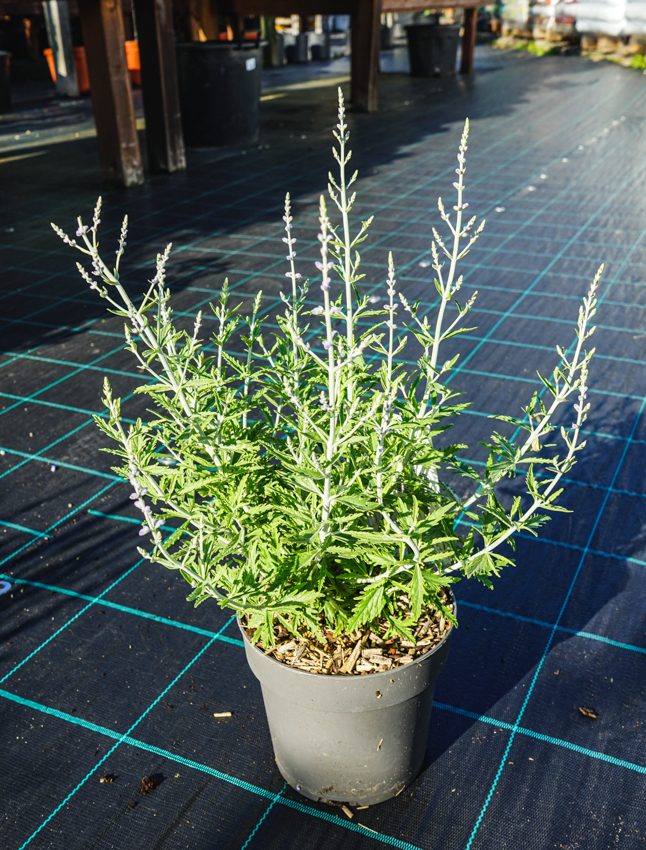
304 Kč

304 Kč
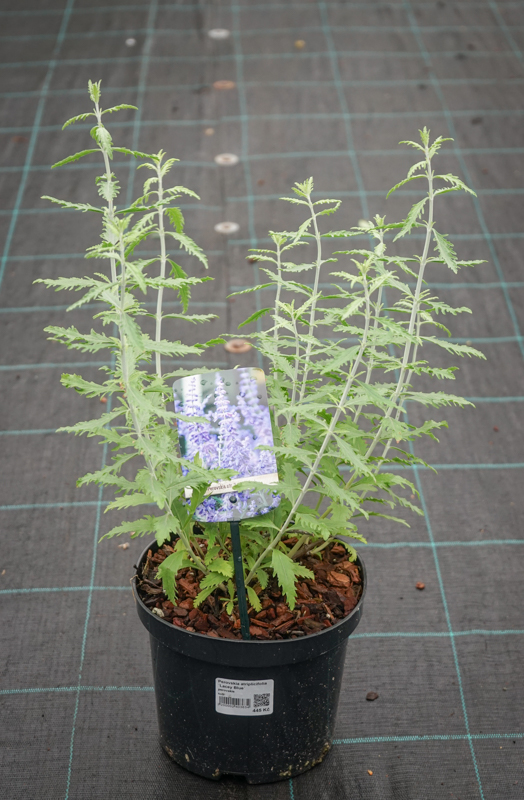
356 Kč
Goods are shipped all over Europe. For Russia and U.K. and for further details please read about SHIPPING OPTIONS HERE.
Are you interested in a serious discount for orders NOV-FEB? Check your options here.
THE PRICES INCLUDE VAT of 15%. For quick conversion you can use 1 CZK = approx. 0.04 EUR
- STANDARD QUALITY - Plants of this group are 1st class quality with number of branches and overall density adequate to their size and age, considering they were container grown.
- DE LUXE QUALITY - This label guarantees a luxurious quality of manually selected plants that, compared to their height and age, are exceptionally dense and beautiful.
- EXTRA - These plants are usually mature and bigger specimens with exceptional overall appearance.
- STANDARD (as described in the plant form) means a tree with a trunk of 190-210 cm and a crown at the top, unless specified differently. The commercial size for trees is their girth measured in the height of 1m from ground.
- HOBBY - These plants are of the same quality as our standard-quality plants but younger and therefore cheaper.
- SHRUB - a woody plant with branches growing bushy from the ground level.
- HALF-STANDARD or MINI-STANDARD - a small tree with shorter trunk, its size is usually specified.
- FEATHERED - These are trees with branches growing already from the base of the trunk and up along the stem.
- GRASSES and PERENNIALS - Sizes given usually read the diameter of the pot or the clump, as specified.



















